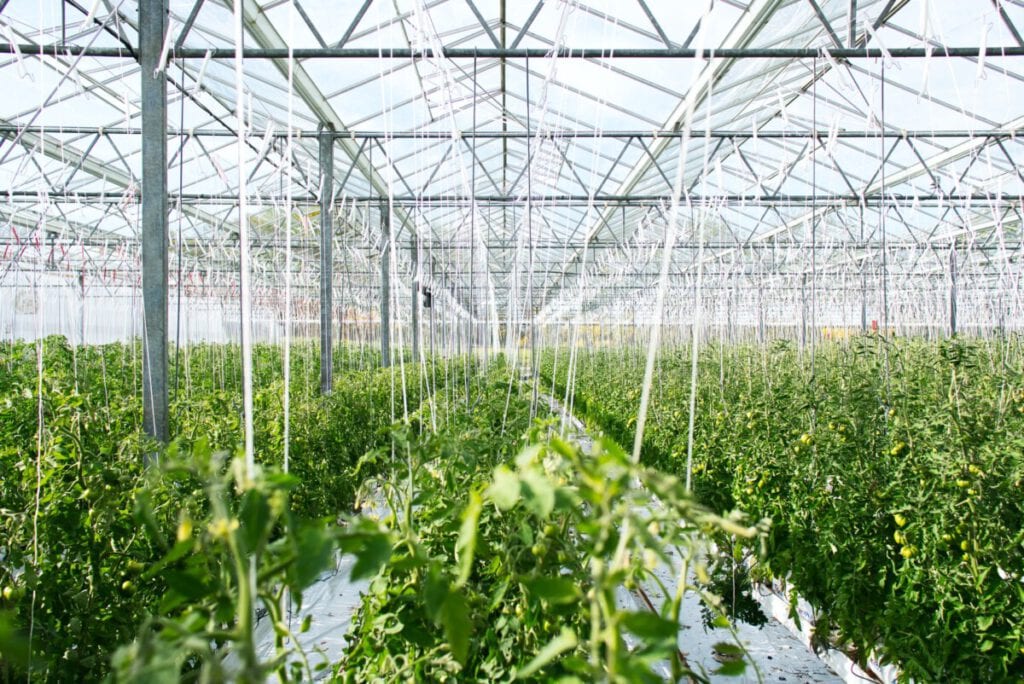The US is the biggest agriculture exporter in the world, but which nation takes second place? Thanks to decades of innovation and hard work, it’s the Netherlands! Farming without unnecessary waste, toxins and with conscious anticipation of our changing planet, the Dutch make farming in 2020 feel like farming in 3019.
Dutch agriculture is a major player globally and is currently the biggest exporter of agricultural goods after the United States. How did such a small country become such a top dog when it comes to exporting?
Here are some ways the Dutch are farming for the future:
The Agriculture industry is expanding in the Netherlands
Dutch agriculture exports rose 8% to the equivalent of €9.9 billion in 2019. You might have already seen one of these videos in which the Dutch prowess on agriculture, food exporting and innovation was shown:
So what has generated such expansion?
Exporting Dutch agriculture: what and where?
The minister for agriculture, nature and food quality, Carola Schouten commented that “global issues vis-à-vis growing demand for food and our responsibility for the landscape, biodiversity and climate change”. In short, it’s a lot of €€€, but the Dutch are also heavily influencing the agri-exporting game when it comes to these changing circumstances.

It’s fair to say that the Netherlands, a trade economy and its heart, also knows a thing or two about getting the right price for their products.
Dutch innovation: truly farming for the future
Innovation as a whole has impacted the Netherlands massively over the years and it has really helped to drive more modernised farming methods. In short, over time the Netherlands really will be farming for the future. The proof is in all those stats.
The R&D (research and development) expenditure of Dutch companies (that have over 10 employees) increased by nearly 11%. Companies in the agricultural sector grew by around 19% (from €728 million to €864 million) marking a huge boost in productivity.
But how exactly are the Netherlands being innovative when it comes to farming, I hear you ask?
Dutch sustainable bananas from greenhouses
The University of Wageningen grew their first crop of bananas using an alternative soil composite made of coco peat and rock wool. The process ensures that any fungus making its way into the product through bad soil is eradicated and that’s pretty damn innovative.
Using food waste to feed farm animals
Naturally, with demand for meat comes the constant need to feed your livestock. Dutch company Nijsen/Granico, based in Veulen, rejects the idea that there is not enough food in the world to feed their livestock. They produce about 90,000 tons of animal feed a year entirely from discarded foodstuffs. Farmers in the Netherlands have already solved feeding cattle long-term, it would be easier to count the number of things the Dutch can’t innovate.
The floating farm in Rotterdam
Just last year we wrote about Rotterdam’s new “floating farm“. The entire farm will be sustainable, feeding their cows with leftovers from local restaurants, collected by electric-powered trucks from GroenCollect. The remaining feed will be from home-grown duckweed.
Even the cow manure is collected and sold, making the floating farm perfectly sustainable. Years of refining and improving farming methods and limiting waste have ensured Dutch dominance in the agriculture sector.

Here are some other nice Dutch innovations to have a look at:
How the Dutch might just help the world feed itself
The Dutch made an oath that goes a little like this: “producing twice as much food using half as many resources”. Since the turn of the century, many farmers have reduced dependence on water for key crops by as much as 90%.
Dutch farmers have also almost completely eliminated the use of chemical pesticides in greenhouses. What about organic milk? Dutch poultry and livestock producers have cut their use of antibiotics by 60% in the last decade. Impressive.
By 2050 there are expected to be 9 billion people on Earth. Numbers like these shake the agricultural supply chain. It’s will be a make or break moment in human history unless many more farms adopt circular practices.
With this in mind, we can sleep sound knowing that the top five agri-food companies in the world all have R&D labs in the Netherlands. This will help them research sustainability and implement it internationally in the future. Yet again the Dutch are helping the world become a more sustainable place. There’s no telling what other amazing innovative techniques that will come up with over the years!
Feeling optimistic? You should be, the Netherlands is lush and fertile, plant life and vegetation are still readily available in huge proportions, with €6.7 billion worth of vegetables exported from the Netherlands last year. The grass is truly greener where you water it.
Impressed with Dutch agriculture? Or are there still areas where you think the industry can improve? Let us know in the comments below.
Feature Image: 3282700/Pixabay
Editor's Note: This article was originally published on February 28, 2019, and was fully updated August 2020 for your reading pleasure.
The post Farming for the future: why the Netherlands is the 2nd largest food exporter in the world appeared first on DutchReview.
Source: dutchreview.com

Комментариев нет:
Отправить комментарий